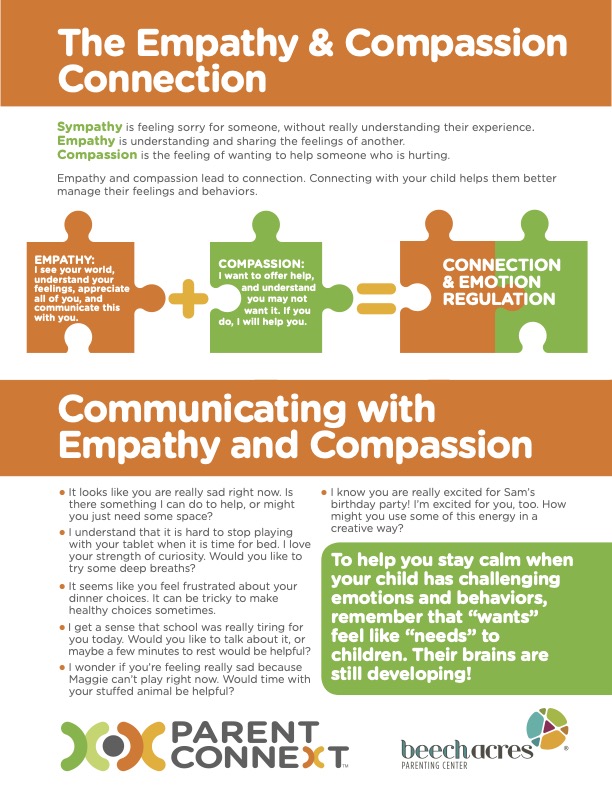The Empathy and Compassion Connection

The Empathy and Compassion Connection
To help you stay calm when your child has challenging emotions and behaviors, remember that “wants” feel like “needs” to children. Their brains are still developing! Here are some tips from our Parent Connext™ experts to help you communicate with empathy and compassion.
Sympathy is feeling sorry for someone, without really understanding their experience.
Empathy is understanding and sharing the feelings of another.
Compassion is the feeling of wanting to help someone who is hurting.
Empathy and compassion lead to connection. Connecting with your child helps them better manage their feelings and behaviors.
Communicating With Empathy and Compassion
- It looks like you are really sad right now. Is there something I can do to help, or might you just need some space?
- I understand that it is hard to stop playing with your tablet when it is time for bed. I love your strength of curiosity. Would you like to try some deep breaths?
- It seems like you feel frustrated about your dinner choices. It can be tricky to make healthy choices sometimes.
- I get a sense that school was really tiring for you today. Would you like to talk about it, or maybe a few minutes to rest would be helpful?
- I wonder if you’re feeling really sad because Maggie can’t play right now. Would time with your stuffed animal be helpful?
- I know you are really excited for Sam’s birthday party! I’m excited for you, too. How might you use some of this energy in a creative way?
Download this and keep handy for communicating with empathy and compassion.





